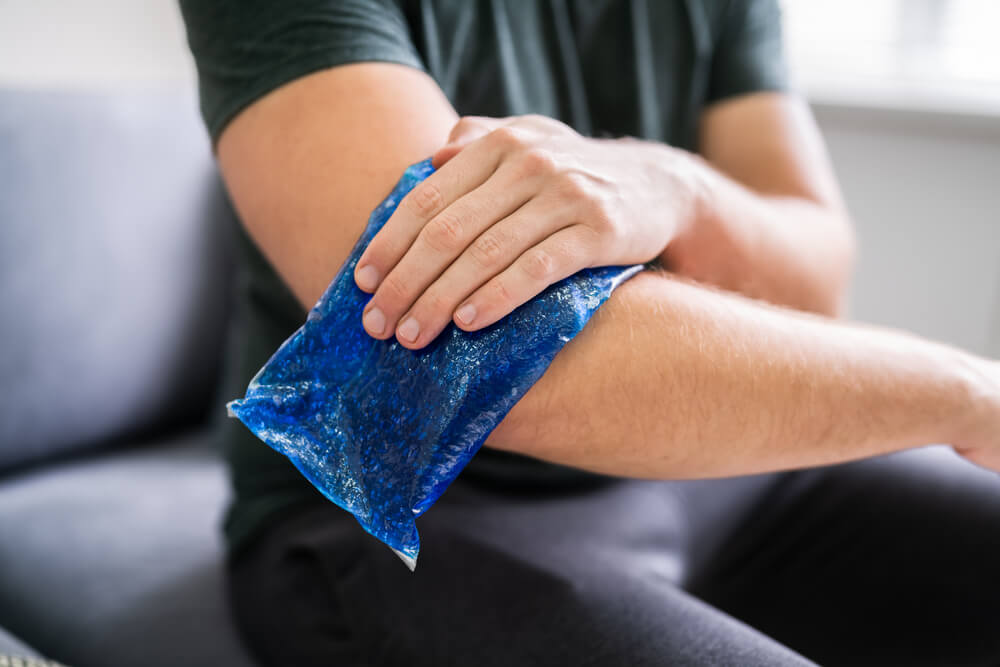
Using heat or ice for a strained muscle can help to reduce pain and swelling, and even speed up recovery time. But when do you ice or heat an injury? That’s the question we get a lot here at Integrity Physio.
Today we will have a look at when to use heat or ice for a strained muscle.
As a general rule, use ice for acute pain or injuries, including inflammation, and heat for muscle pain and stiffness. But check with local physio in South Perth if you’re unsure!
Heat Or Ice – Which Is Safer?
Ice is the safest and less likely to harm, particularly when used for short periods. If you’re unsure how to safely and effectively manage the pain, seek a professional opinion.
Heat Therapy
How It Works
Heat therapy works by improving blood flow and circulation to the area being treated. The increase in temperature in the affected area helps increase muscle flexibility and soothe discomfort. Heat therapy helps to heal damaged tissue and relax muscles.
The Use Of Heat:
- Increases circulation
- Increases metabolic activity
- Can increase inflammation
- Relieves pain
- Soothes and relaxes muscles
Heat Is Good For Use On:
- Stiff joints
- Muscle pain
- Chronic pain
Types Of Heat Therapy
There are two main types of heat therapy:
- Dry heat therapy. This includes hot water bottles, heating pads, dry heating packs, and saunas. Dry heat therapy is easy to apply and can easily be administered at home.
- Moist or wet heat therapy. Moist heat is when the heat is delivered via a steamed towel or a warm bath. This type of heat therapy is sometimes more difficult to administer but delivers results faster.
When To Use
Heat is effective against chronic pain, stress, and your muscles. It helps to ease symptoms such as stiffness and aching. Chronic pain, particularly back pain, often involves tension and stress. Heat can help to soothe an edgy nervous system. Generally, heat therapy:
- Should be applied for muscular pain where there is no indication of a muscle tear
- Suitable for a muscle spasm
- Can be applied frequently and for long periods for non-inflammatory muscular pain
When To Avoid
- Avoid intense heat in sensitive areas around the front of the neck, face, and groin region
- Should never be used on acute injuries where the area is hot or swollen
- Should be used more moderately in the older population as body tissues dissipate heat more slowly as we age
Heat Therapy Risks
The heat applied in the wrong situation can cause harm and delayed recovery. Without an assessment, we are unable to advise you specifically on how you should manage your condition. The above information is to act as a general guideline to minimise any harm until you can seek a professional opinion.
Cold Therapy
How It Works
Cold therapy or cryotherapy is great for easing damaged superficial tissue that is hot, red, inflamed, or swollen. The inflammatory process is a natural process; however, it can be painful. Applying cooler temperatures can help to dull the pain and reduce swelling by reducing the blood flow to a specific area.

Cold Therapy Can:
- Reduce circulation
- Decrease inflammation
- Numb skin
- Decrease metabolic activity
- Reduce pain and swelling
Cold Therapy Is Good For Use On:
- Ankle sprains
- Muscle strains
- Red, hot or swollen injuries
- Acute pain
Types Of Cold Therapy
Four main types of cold treatment can help reduce blood circulation and inflammation:
- Ice packs or frozen gel packs
- Ice baths
- Coolant sprays
- Ice massage
Other types of cold therapy involve whole-body cold therapy treatments, cryostretching, and cryokinetics which aim to incorporate movement and stretching into ice therapy to reduce spasms.
When Should I Use Cold Therapy?
Use cold therapy within 72 hours following new injuries where there is a suspected sprain or strain.
Rest Ice Compression Elevation (RICE) is the standard for such injuries of which compression is the most effective but ice assists the most with pain relief. Remember, ice should be applied for no more than 15 minutes at a time with the tissue allowed to return to a normal temperature before re-applying. For areas that cool quickly such as hands, wrists, or elbows, 10 minutes is sufficient.
When Not To Use Cold Therapy?
Ice therapy isn’t for everyone. People who live with a sensory disorder that prevents them from experiencing cold sensations should refrain from cold therapy treatments because they might not be able to notice if the treatment is causing any harm. Remember not to use cold therapy on stiff muscles or joints – especially if you have poor circulation.
Risks Of Cold Therapy
Prolonged cold therapy can result in nerve damage and even affect the tissue. If you’re using cold therapy regularly it’s good to know the risks and have a healthcare professional guiding you in its application.
Get Your Recovery Back On Track With Integrity Physio
Knowing when to use heat or ice for a strained muscle will improve the effectiveness of the treatment and speed up recovery. If either treatment makes the pain or discomfort worse, stop immediately.
If the treatment doesn’t appear to be helping within a couple of days, make a physio appointment to get back on track.




